| |
 |
Why are we doing the "Outreach Through the Art" program?
|
| |
Naoko-Art.com works closely with Islands4Kids.org, Marine-Debris.org, and Miyakojima-kidsnet.org, which are entirely self-funded non-profit entities managed by our family. We are creating a web-based educational program for children and adolescents to protect the marine environment and beach ecological systems worldwide..
The salient features of our programs are preparing characteristic original images and visual materials to enhance memory of a lifetime, facilitating a comprehensive idea of marine environmental protection, and saving the beach assets.
Providing original and distinctive artworks is a critical incentive to learn about environmental conditions. Our outreach program is committed to increasing the amount of information input into the actual situation of the marine environment by using a large volume of visual media.
We believe in the transformative potential of art and visual media, and we also believe in children's acute sensitivity and strength of communication. Children who have learned a truth through visually stimulating materials desire to impart excellent impressions to their friends, siblings, parents, and grandparents.
These are the motivations behind our continued participation in this activity. |
| |
 |
| |
|
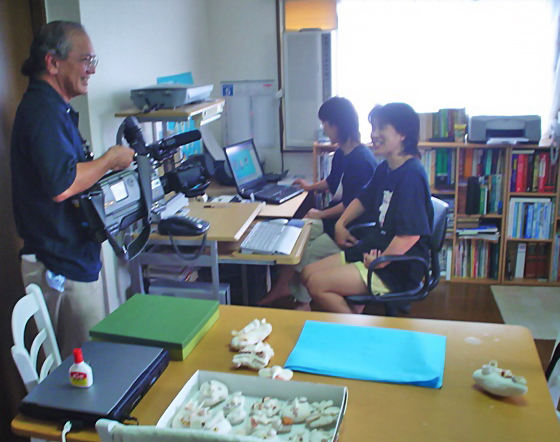 |
My sister Keiko and I were interviewed by a Japanese network television station when we first began working on the "Coral Whisper" project in Miyako Island, Okinawa. Our concept of creation, which includes "use the shape of the bleached corals and shells as found on the beach," "not adding color," and "using only water-soluble glue that decomposes immediately upon return to the sea," as well as "returning the corals and shells to the original beach after photographed," was brought to their attention. |
| |
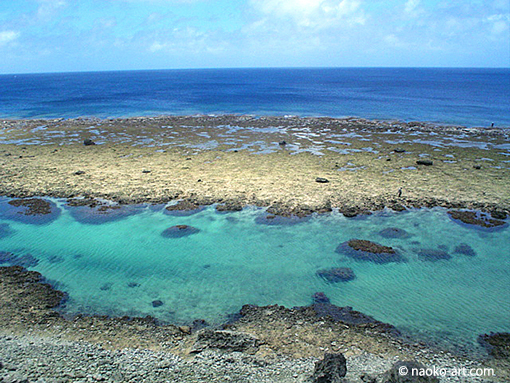 |
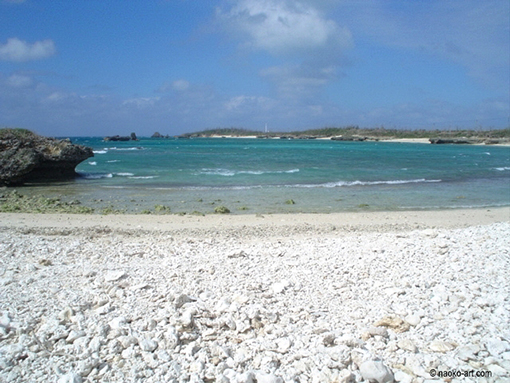 |
| This photo shows part of one of the most extensive coral reefs in Japan. It grows in clusters on Miyako Island, so a part of it appears above the surface of the sea at low tide.
Corals, born on earth 500 million years ago, are very delicate creatures, even though they are part of the creator of the marine ecosystem. They have been surviving and bleaching along with environmental changes since long ago. |
Annually, significant quantities of bleached corals are washed ashore on the beaches of Miyako Island in Okinawa. Coral bleaching occurs when corals expel their symbiotic algae (zooxanthellae) due to environmental stressors in the ocean. This expulsion leads to a loss of color and eventually results in the corals' death and fossilization. |
| The 5th International Marine Debris Conference in Hawaii |
| |
We lived in Honolulu for over 20 years until 2004, so the opening session in the Bishop Museum's garden, done in traditional Hawaiian luau style, was very nostalgic and memorable.
Around 450 scientists, researchers, educators, and leaders of non-governmental organizations from around the world attended this meeting. |
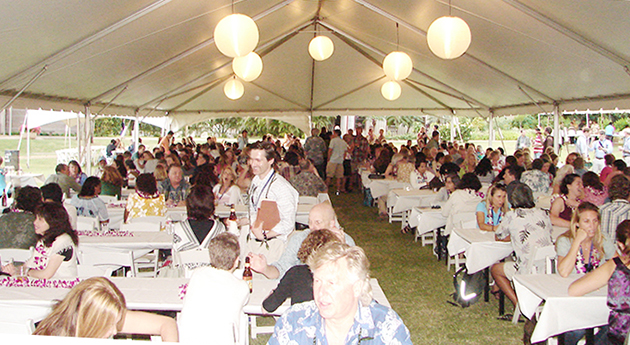 |
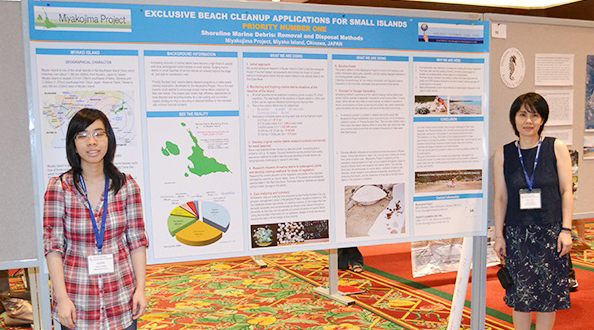 |
We provided comprehensive statistics on plastic marine debris from Asian countries that washed ashore at Miyako Island's monitoring points. |
With Mr. Jean-Michel Cousteau, a well-known oceanographic explorer, film producer, and environmental educator.
He was the keynote speaker at the 5th International Marine Debris Conference. |
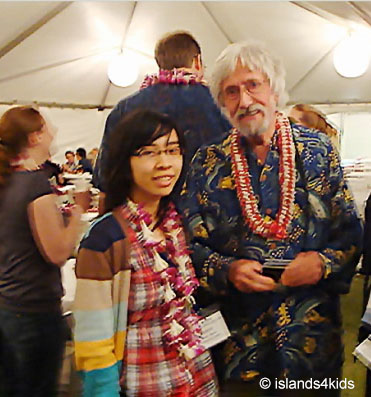 |
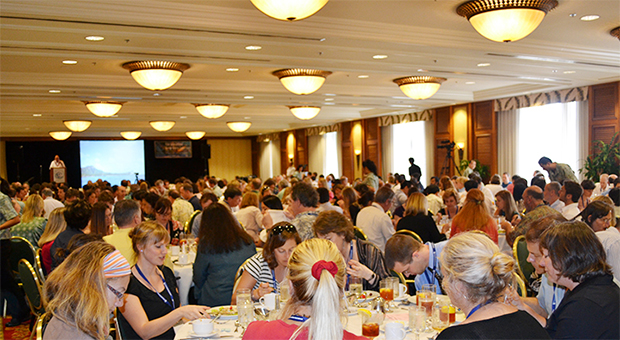
|
We made a "Commitment Speech" during the final session of the four-day conference. |
| |
| |

|
The 6th International Marine Debris Conference
|
| |
| |
 |
We attended the Sixth International Marine Debris Conference 2018, co-organized by NOAA and the United Nations Environment Programme in San Diego, California, and gave a presentation.
Around 700 scientists, researchers, educators, and non-governmental organization leaders from over 50 nations attended.
We had been tracking a seven-year situation analysis of debris washed out to sea by the 2011 Tohoku earthquake-related tsunami, which arrived on the Kuroshio Current and made its way to the Pacific North-West coast of the United States.
The goal of attending this international conference was to present our study and demonstrate our unique technique of educating youngsters about the current state of marine trash around the world utilizing a variety of visual aids, most notably our ecological arts. |
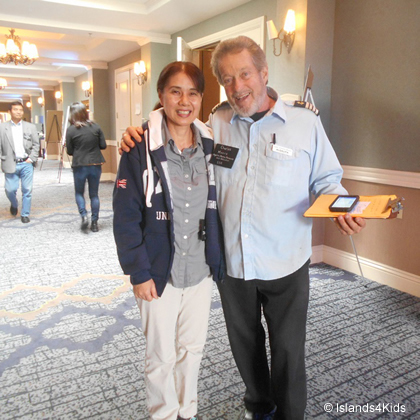
|
We had the wonderful opportunity to meet with Captain Charles Moore, again. One of the most famous oceanographer and founder of the Algalita Marine Research and Education. We also attended his technical session presentation on their documentation of an increasing accumulation of marine debris while sailing across the north Pacific subtropical gyre.
|
| "Upper River Outreach Strategy to Minimize Plastic Marine Debris" was presented to conference attendees. |
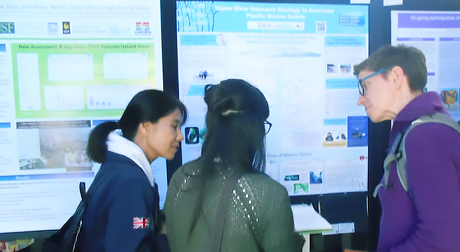 |
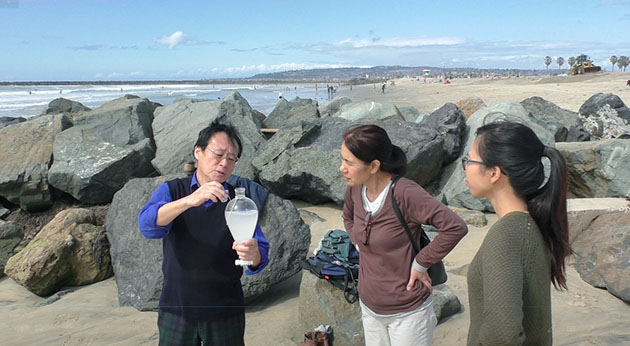 |
Following the conference, we went to the beach in San Diego, California, with our friend Professor Saido to collect ocean water samples for quality analysis.
Professor Katsuhiko Saido is a world-renowned and highly cited ocean water quality researcher and a pioneer in the field of waste polystyrene degradation in the sea. |
| |
| Exchange of research information with Ph.D. Saido. He has a vast amount of survey data on seawater collected in oceans worldwide. |
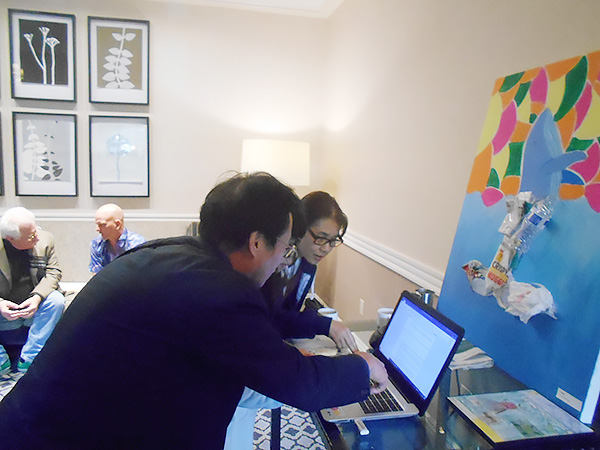 |
| |
| |
| |
| Local Outreach Activities |
| |
| Local organizations invite us to give talks on marine debris issues and the reality of changing ocean environment. This is one such outreach activity at district meetings of international organizations.
We aim to bring people of all ages, not just children, together to think across age barriers, what we call a "cross-generation approach," and work towards solutions. |
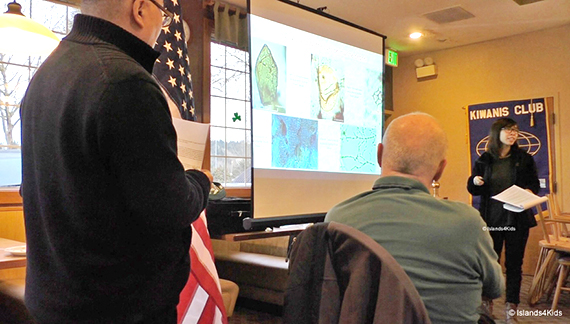 |
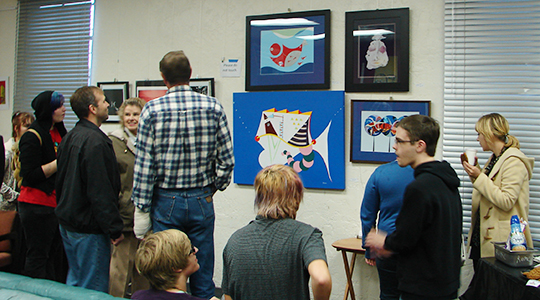 |
At the Redmond City Youth Program, we took part in an exhibition and informative session about ecology art.
We address environmental issues with children through a variety of channels, including online educational programming, exhibits, and community engagement.
For example, provide interactive presentations and workshops that teach children about environmental issues such as conservation, sustainability, and the impact of climate change on the ocean ecosystem.
We also build and integrate hands-on activities and games on our website to make the learning experience more engaging for children at home, school, or community events to make our outreach initiatives more practical. We offer environmental education programs for schools and community organizations, and we may collaborate with organizations and professionals to generate instructional resources and materials. |
This is the Redmond City Hall, which is near Seattle, where we live.
As an outreach project to promote the message about the need for protection, we are conducting as many as possible for an exhibition of artwork utilizing bleached coral, our symbol of marine environmental conservation. |
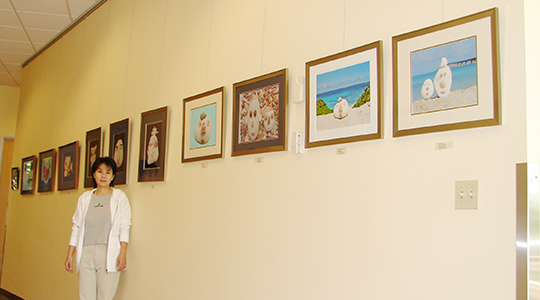 |
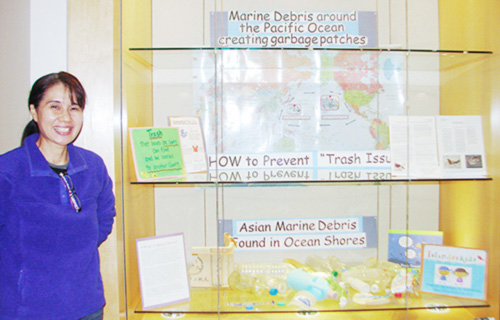 |
Here we are in front of the display case at the Redmond Public Library, a neighboring city of Seattle. At this time, we collaborated with a local high school to educate people about marine debris.
The positive aspect of these outreach activities at the libraries is that we can capture the interest of many children. |
| |
We are implementing abstract designs to present new and unique visuals that can capture a child's attention, making them more likely to engage with the ocean environments and ecosystem.
Abstract methods can encourage children to think creatively and imagine different interpretations, leading to a deeper understanding and better memory retention.
(At the collaboration events with the local high school at the Kirkland City Public Library) |
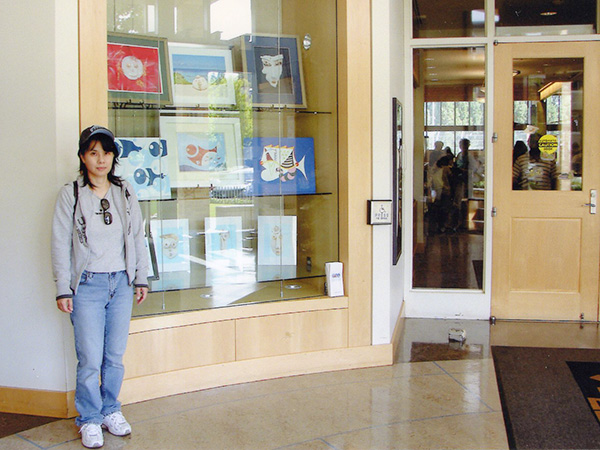 |
| |
| |
| Research Activities |
We chartered a boat to Miyako Island's Yaebiji Coral Reef in 2019 to see Japan's most densely populated coral reef. When we visited there, coral bleaching was visibly noticeable.
Coral bleaching is the process by which coral loses its color when it expels the symbiotic algae (zooxanthellae) that live inside it, leaving the coral white or "bleached" because of complex issues with many underlying factors. |
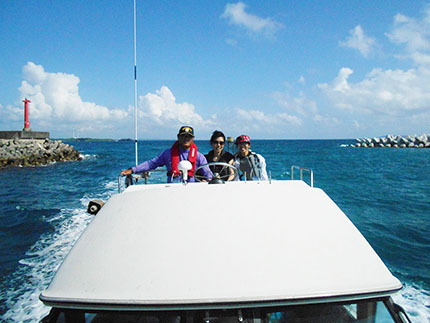 |
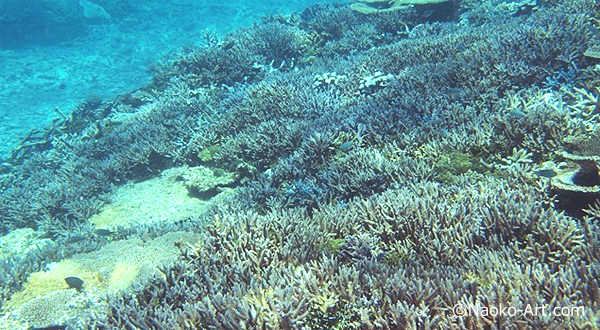 |
The primary cause of coral bleaching is prolonged exposure to water temperatures that are too high or too low; they become stressed and expel the algae that live inside them. Without these algae, the corals cannot obtain enough energy to survive and grow, and they become more susceptible to disease and other threats.
As the oceans absorb more carbon dioxide from the atmosphere, they become more acidic. This ocean condition can make it harder for corals to build their calcium carbonate skeletons, making them more vulnerable to bleaching and other stressors. Still, other factors, such as high water pollution levels, can also contribute to coral bleaching. |
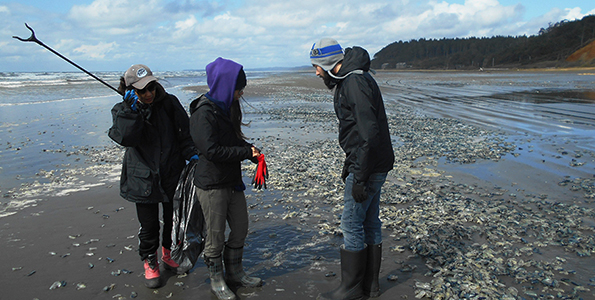 |
After the Tohoku earthquake and tsunami of March 11, 2011, we continued to survey the beaches of Ocean Shores, Washington, where the Kuroshio Current reaches the west coast of the U.S. for about eight years, averaging two to three times a year, to collect data on plastic marine debris from the Asian source.
NOAA and the United Nations Environment Programme have recognized this research activity. (Survey reports are here) |
Environmental conservation efforts of Naoko Art begin with the actions we can do as individuals and households. We aim to effect a gradual and consistent transformation in the ecosystem by planting numerous seeds of this nature.
In pursuit of this objective, we always highly regard the endeavors of all individuals or groups dedicated to protecting and preserving the environment, natural resources, wildlife, and biodiversity and value their methodologies, irrespective of their scale or magnitude, because every activity is significant. |
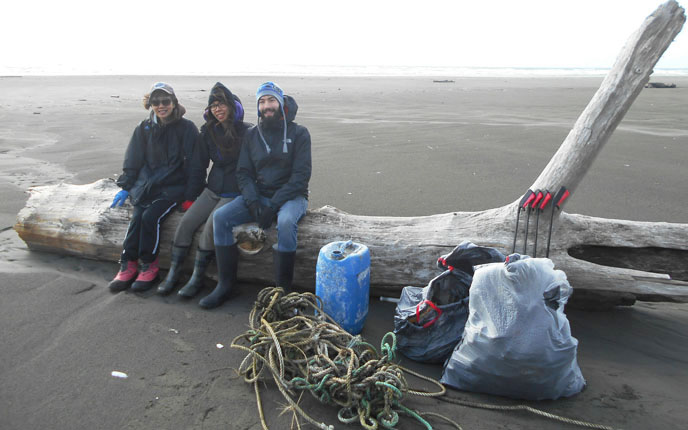 |
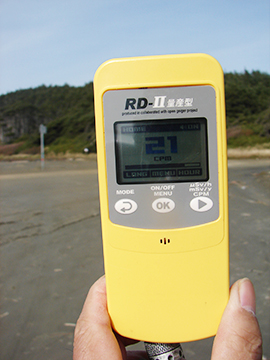 |
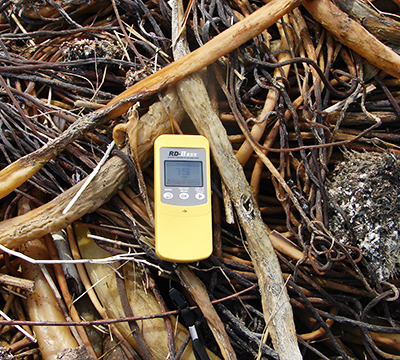 |
Amount of Radiation Dose & Exposure
(March 24, 2014 3:10pm)
Background CPM: 21 CPM (counts per minute)
Microsievelt per hour: 0.17µSv/hr
Millisievelt per year: 1.5 mSv/yr
Milligray per year: 1.5 mGy/yr
Becquerel per cm2: 8.3 Bq/cm2
Picocurie per kg: 13,072 pCi/kg |
Amount of Radiation Dose & Exposure
(March 24, 2014 3:13pm)
Seaweeds CPM: 19 CPM (counts per minute)
Microsievelt per hour: 0.16µSv/hr
Millisievelt per year: 1.4 mSv/yr
Milligray per year: 1.4 mGy/yr
Becquerel per cm2: 7.5 Bq/cm2
Picocurie per kg: 11,827 pCi/kg |
Following the tsunami caused by the Tohoku earthquake in 2011, the Fukushima Daiichi nuclear power facility erupted in a steam explosion, dispersing radiation materials into the air and waters. Some Pacific Northwest locals were worried about the consequences of radioactive materials because their area is on the Kuroshio Current's path of the North Pacific Gyre.
Thus, every time we assessed marine debris research at Ocean Shores for six years, starting in 2012, we also took our radiation detectors and independently recorded radiation levels. Fortunately, our survey results were within the EPA's regulatory limits and were always within the safe levels of radiation guidelines. We did not find any above-average radiation levels, so we did not need to report or ask an expert from the state's organization to study further.
|
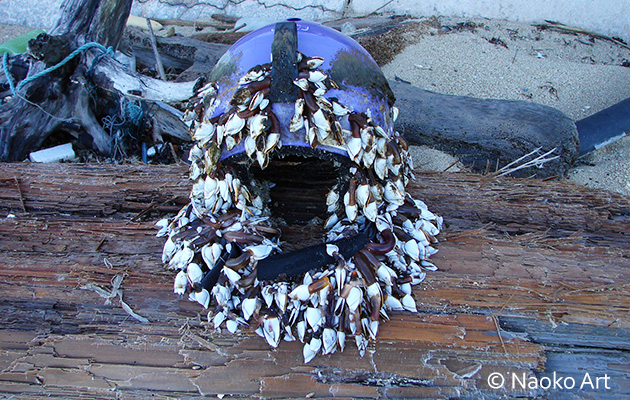 |
This photo is one that we use a lot as an iconic piece of our children's marine debris outreach program.
The helmet is covered with Goose Barnacles (lepas anatifera), but the composition is unlikely to be coincidental.
How these two, which we named "Long Rider," came together and continued to drift through the sea for many years until they reached this beach and were discovered by us is a mystery. However, the helmet and the driftwood are also firmly attached as the marine organisms continue to produce an enzyme that is the bonding agent between their bodies and the driftwood.
This photo is valuable in that it explains the relationship between drifting debris and marine life, including plankton, in a way that is a typical visual aid with a strong impact.
(from our research photo library) |
This scene is one of our typical Marine debris arrival situation research and cleanup activities.
The ocean current also affects the coast of Ikema Island in Miyakojima., which brings in a constant stream of drifting plastic from the
East Asian region. |
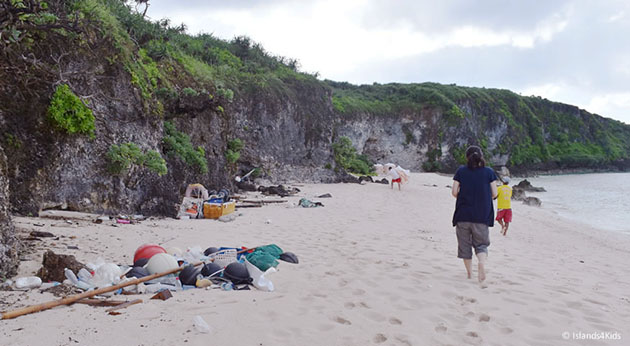 |
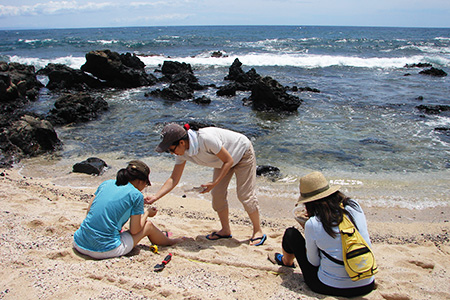 |
A survey of microplastic debris on Sanday Beach, Oahu, HI.
A microscopic examination of the sand on this beach revealed an unexpected finding: a significantly higher concentration of finely divided nano-scale microplastics than expected.
|
Looking at marine debris issues from a biological perspective offers many new insights. Nahoko Art and its affiliated outreach and development unit "Islands4Kids. org" are introducing many micrographs of plankton that have been artistically digitally processed. These images are an excellent tool for engaging children with marine debris issues.
(Click here to view other photos) |
|
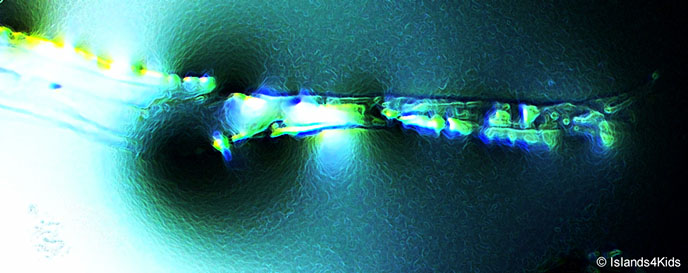 |
This image is reminiscent of a sharp biotech sword gleaming on a pitch-black night. However, this is a microscopic image of Pseudo-nitzschia pungens (Grunowez leve). The cell size is 8µm wide and 130-170µm in length. |
|
|
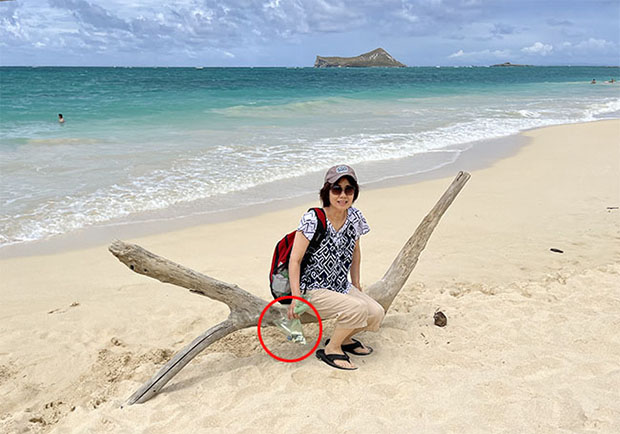
| 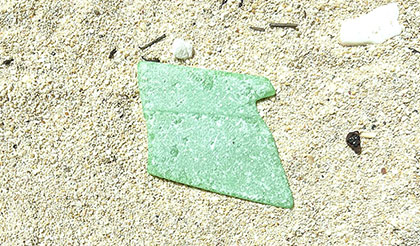
On May 30th, 2023, we searched the plastic debris on the beach at Waimanalo in Hawaii for any pieces in a deteriorated condition of plastic that would serve as useful visual reference material.
This plastic we picked (33mm x 27mm) seems like a broken piece of a small container.
|
This is a microscopic image of the small plastic debris surface we picked.
This image shows the typical deterioration process of plastic on the superficial side and being flaked or desquamated.
There are many factors in the physical degradation of plastic. When we see this piece, photodegradation may be the leading cause because the UV radiation in sunlight cause the polymer chains to break apart.
There are also some dented pits, possibly created by plastic-eating bacteria.
Each flaked piece is 40~300 nanometers, but this size does not mean this plastic debris disappears but remains in the environment even after becoming smaller pieces.
|
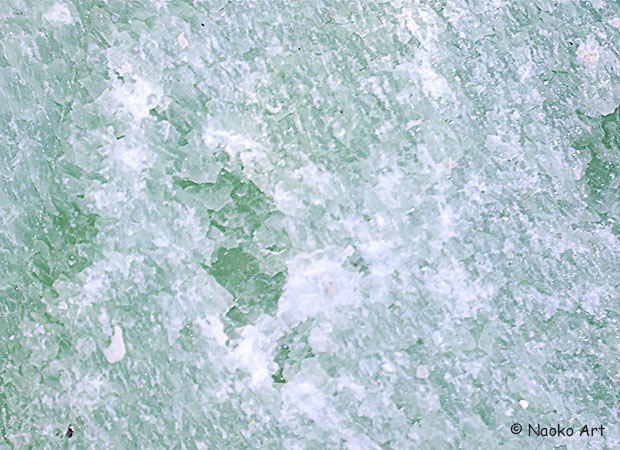 |
A significant part of the problem with plastic products is that even when they seemingly disappear or become invisible, their harmful effects remain unchanged as microplastics or nanoplastics.
For more research results, please visit our outreach program "islands4kids.org" |
| On the Career Day Event, Naoko visited the elementary school in Honolulu, Hawaii to talk about arts and environments. |
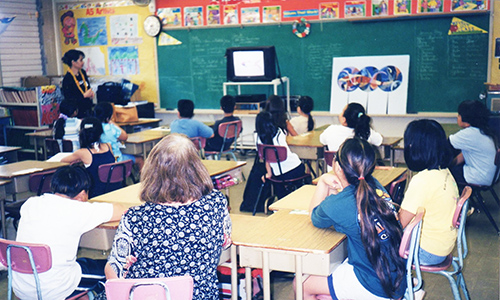 |
Naoko Otsuka Metaverse Ecological Art Gallery on SPATIAL
Our research group, recognizing the transformative potential of the Metaverse, is concurrently engaged in a series of coordinated initiatives. These endeavors are driven by the objective to streamline and optimize the delivery of environmental education to younger audiences. We focus on leveraging virtual environments' flexibility and immersive capacity to foster a deeper and more meaningful engagement with these vital subjects.
Please visit and enjoy Naoko Otsuka's Ecological Virtual Art Gallery by clicking here. |
| Other Research Activities of Naoko Art |
| Naoko Art engages in additional research activities focused on the methodology of conveying the narrative of marine and beach ecosystems to young audiences through the use of visual materials. |
|
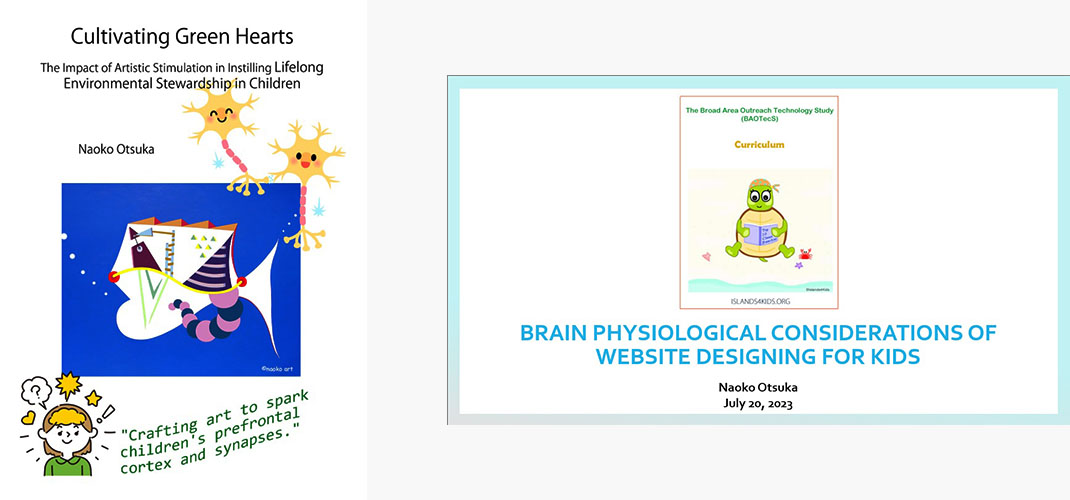
| Our goal is to improve the efficiency of children's environmental education through visual materials. To this end, we continue to conduct numerous research on color, graphic techniques, and placement methods that refer to the findings of neuroscience to enhance cognitive effectiveness. |
 |
This approach is grounded in the understanding that visual learning is a critical aspect of early education, leveraging the brain's inherent capacity for image processing to foster a deeper connection with environmental concepts. Preliminary results suggest that strategic use of color and imagery, informed by neuroscientific principles, significantly enhances retention and comprehension among young learners.
Future studies of Naoko Art will aim to refine these techniques, exploring the potential for personalized learning experiences that adapt to individual cognitive styles and preferences, thereby optimizing educational outcomes in environmental awareness and conservation.
(Naoko at her workstation)
|
| Artist activities in Honolulu, HI |
| |
| |

© Copyright 2003-2024 naoko-art.com. All rights reserved
Naoko Art Lake Stevens, WA, U.S.
|



